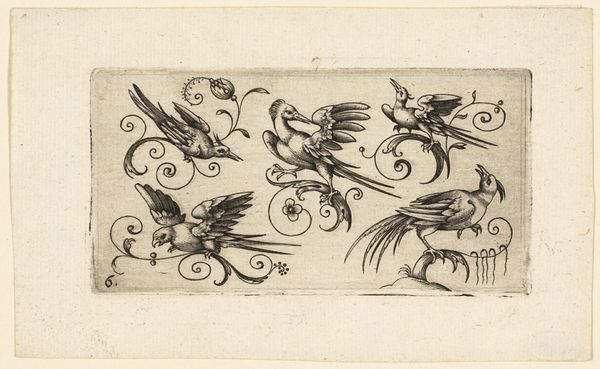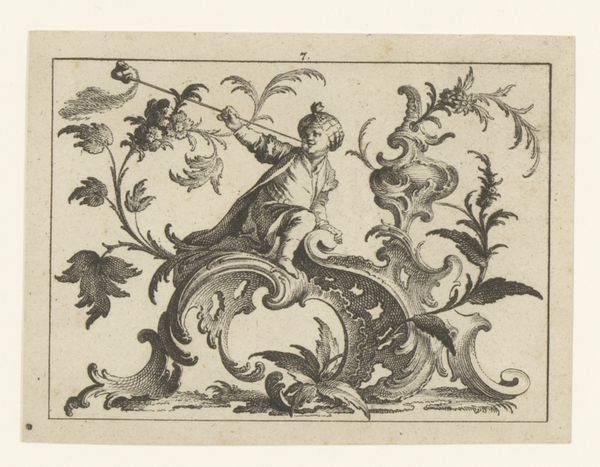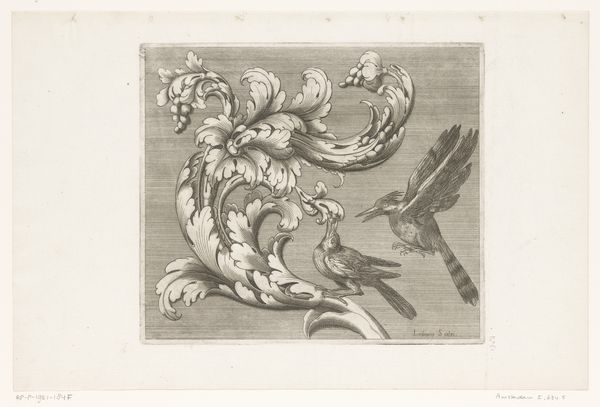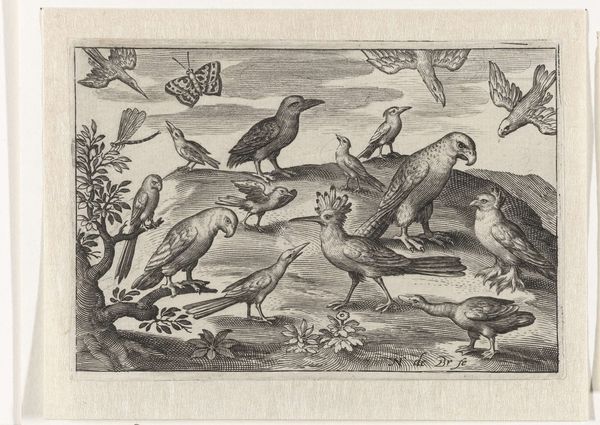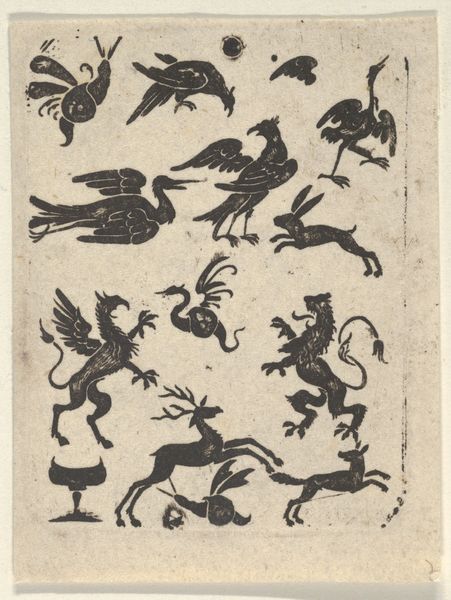
drawing, print, paper, engraving
#
drawing
#
animal
# print
#
pen sketch
#
paper
#
11_renaissance
#
northern-renaissance
#
engraving
Dimensions: 51 × 98 mm (plate)
Copyright: Public Domain
Curator: This delicately rendered engraving, dating back to 1617, is titled "Ornament Panels with Birds: Plate 3" and was created by Adrian Muntink. It's currently housed here at The Art Institute of Chicago. Editor: Immediately, I’m drawn to the monochromatic palette, the intricate linework; it’s so visually crisp. The starkness emphasizes the precise, almost scientific depiction of these creatures and foliage. Curator: Indeed. While seemingly decorative, these birds and the singular insect, a grasshopper, each carry symbolic weight, often tied to themes of nature's bounty, but also vanity and transience given their relative vulnerability within the ecosystem. Bird imagery was prevalent in Renaissance art as symbols of the soul or messengers between realms. Editor: Right. Look at how Muntink uses hatching and cross-hatching to create tonal variations, giving volume and depth. It’s fascinating how he manages to convey such detail and texture with just simple engraved lines on paper. Notice how each animal is subtly posed within their corresponding segment of foliate. Curator: Exactly. The curling vines and flowers provide a structured setting. But notice the tensions, the way birds are caught mid-preen, almost defensively, and recall such detailed bestiaries often stood as powerful microcosms for the entire natural world, charged with didactic intentions as much as for decorative purpose. Consider the cultural milieu; nature, though bountiful, presented constant threat in that period. Editor: So, this wasn't just about surface beauty or aesthetics, then? I can appreciate it on its formal merits but clearly, you see this as a representation that resonates much deeper. The composition reflects more than meets the eye; perhaps it carries with it cultural anxiety of that time. Curator: Precisely. It speaks to how our forebears considered man's role in observing, understanding and managing the volatile, capricious forces that govern existence; each feathered creature holds a mirror to human experience itself. Editor: The way this single artwork uses visual organization paired with delicate technique… fascinating how simple materials evoke multiple ways of interpreting this Renaissance composition. Curator: And that it persists today, in these walls, available for us to observe and question.
Comments
No comments
Be the first to comment and join the conversation on the ultimate creative platform.

